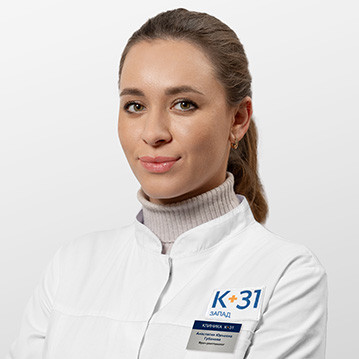Computed tomography of the pelvis is a diagnostic method that visualizes the pelvic bones, joints and adjacent soft tissues using X-rays. The CT device allows you to get layered images of the area under study, which increases the information content and accuracy of the study. The technique is widely used in the diagnosis of injuries and diseases that cause damage to the pelvic bones.
Research Features
Pelvic CT is performed on a CT scanner that generates x-rays. Due to the rotation of the scanning part of the device, it is possible to obtain many x-ray images from different angles and fix them on a sensitive film. Hard and soft tissues located in the pelvic region have the ability to absorb ionizing radiation in different ways, forming outlines of dark and light shades on the film.
According to the density and contours of individual sections on the sections, the diagnostician can judge the development of the pathological process, compare the data obtained with the normal values. All images are processed by software that analyzes diagnostic information and transforms it into three-dimensional models. Before starting the examination, the specialist can set the slice thickness in 1 mm increments, which guarantees high accuracy of CT of the pelvic bones.
For a detailed study of the vascular network and neoplasms located in the pelvic region, computed tomography is supplemented with contrast.
Indications for tomography
The study is prescribed for suspected lesions of the osteoarticular structures of the pelvic region and is carried out in the case when standard radiography is uninformative. A referral for computed tomography of the pelvic bones is issued if there are complaints about:
- pain syndrome in the pelvic area during exercise and at rest;
- joint stiffness;
- problems when walking;
- numbness of the lower extremities;
- bone crepitus;
- restrictions in the movements of the hip joints.
Injuries affecting the pelvic bones, as well as suspicions of malignant tumors with metastases to the bone tissue, are considered an absolute indication for the study. The diagnostic results are used in pregnancy planning for women with rachitic flat deformities, which may prevent the birth of a child in a natural way.
The study of the anatomy of the pelvic bones on CT helps the doctor at the stage of preparation for surgery, managing the patient in the postoperative period, as well as monitoring the effectiveness of treatment.
Contraindications for X-ray diagnostics
Modern X-ray equipment carries a small amount of radiation exposure, but computed tomography remains potentially hazardous to health. Pregnancy and children's age (up to 7 years) are considered absolute contraindications for CT of the pelvis and hip joints. The procedure presents certain difficulties for patients with hyperkinesis (involuntary movements), obesity (the allowable weight depends on the design of the tomograph), and claustrophobia.
CT of the pelvic bones with contrast is not performed if:
- decompensated diabetes mellitus;
- allergies to iodine (the component is part of contrast solutions);
- thyroid diseases;
- kidney and liver failure;
- bronchial asthma.
If contrast-enhanced tomography is prescribed for women during lactation, breastfeeding should be stopped for 2 days after the procedure. During this time, the drug will be completely removed from the body.
CT scan of the pelvis: what the scan shows
Computed tomography makes it possible to visualize in detail the ischial, iliac, pubic parts of the pelvic bones, the coccyx and the sacral spine. The picture will also reflect the hip joints, ligaments, synovial membranes, large regional arteries. With the support of contrast enhancement, smaller vessels and neoplasms with a developed circulatory network become clearly visible.
What does a CT scan of the pelvic bones in women and men show:
- fractures, cracks, displacements;
- dislocations, subluxations, dysplasia, osteoarthritis of the joints;
- Osteo-articular changes due to age;
- lesion of bone tissue by primary and metastatic tumors;
- anomalies in the development of the pelvis;
- signs of destruction characteristic of myeloma, tuberculosis, syphilis;
- accumulation of blood and pus in soft tissues;
- presence of foreign bodies;
- inflammatory processes - tendonitis, bursitis, spondyloarthritis, rheumatoid arthritis.
The use of contrast helps in the diagnosis of atherosclerosis, thrombosis and embolism of regional arteries. The study also gives an idea of the state of the soft tissues, but the study of the anatomy of the pelvic muscles in CT is not a priority.

























